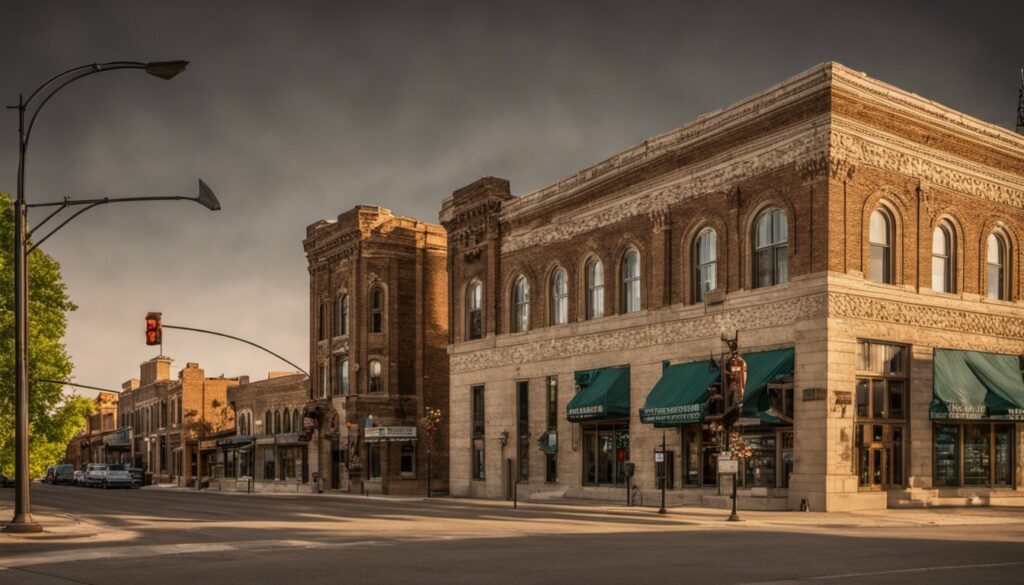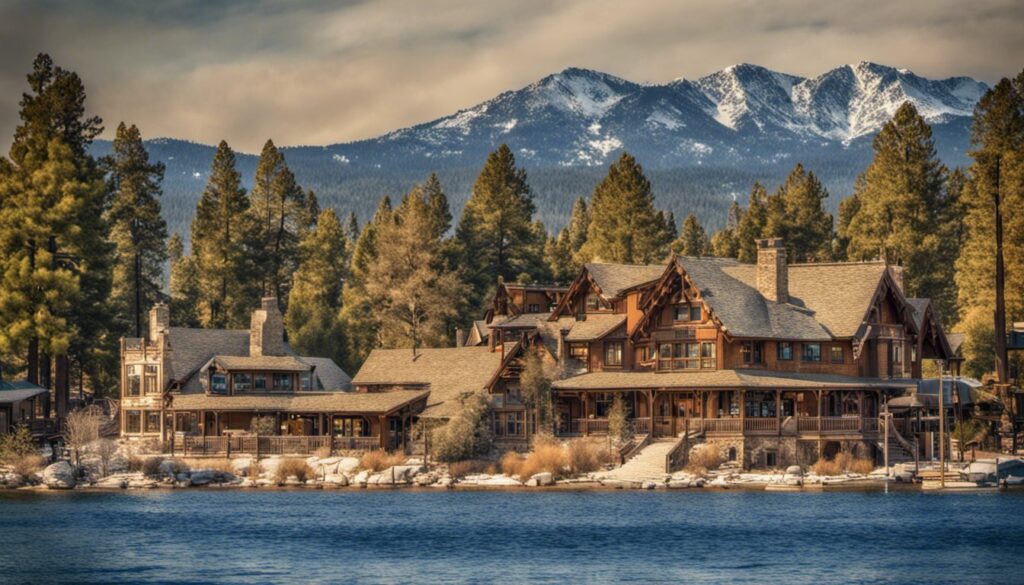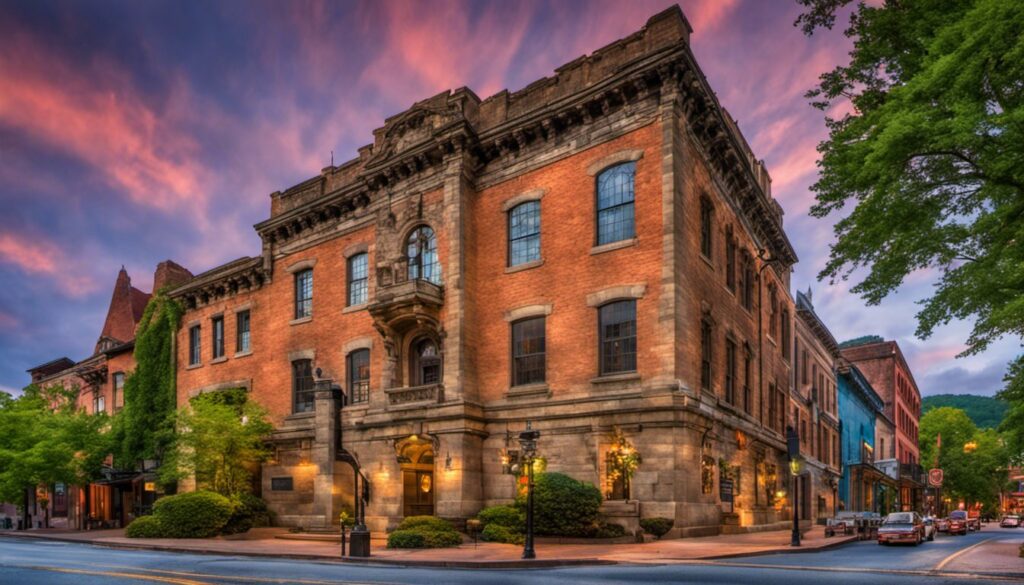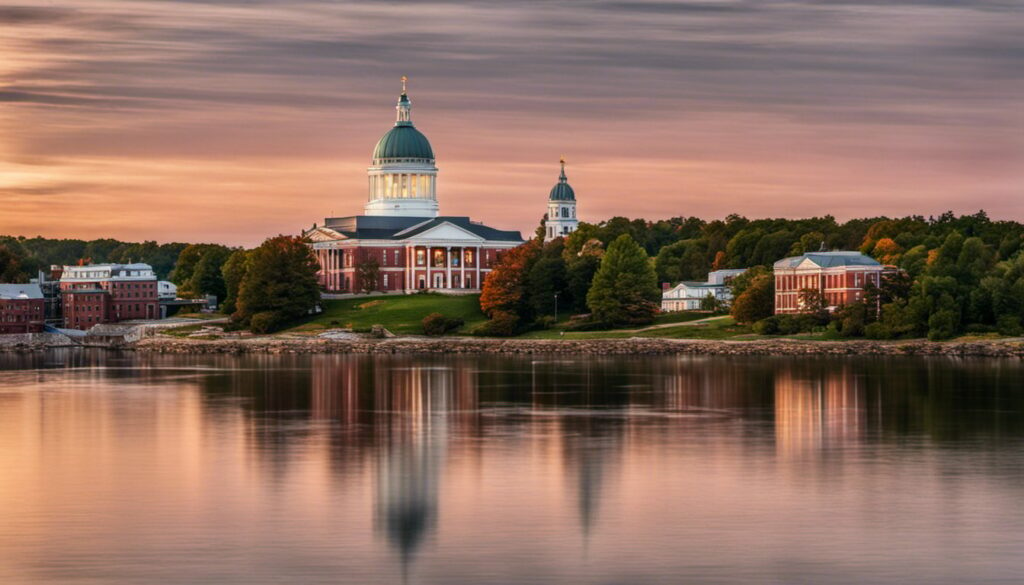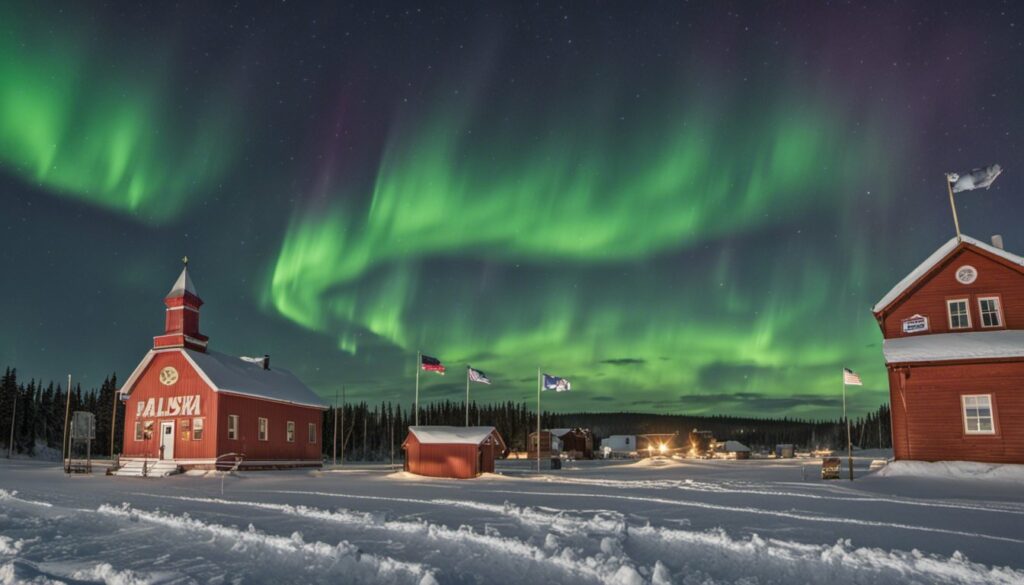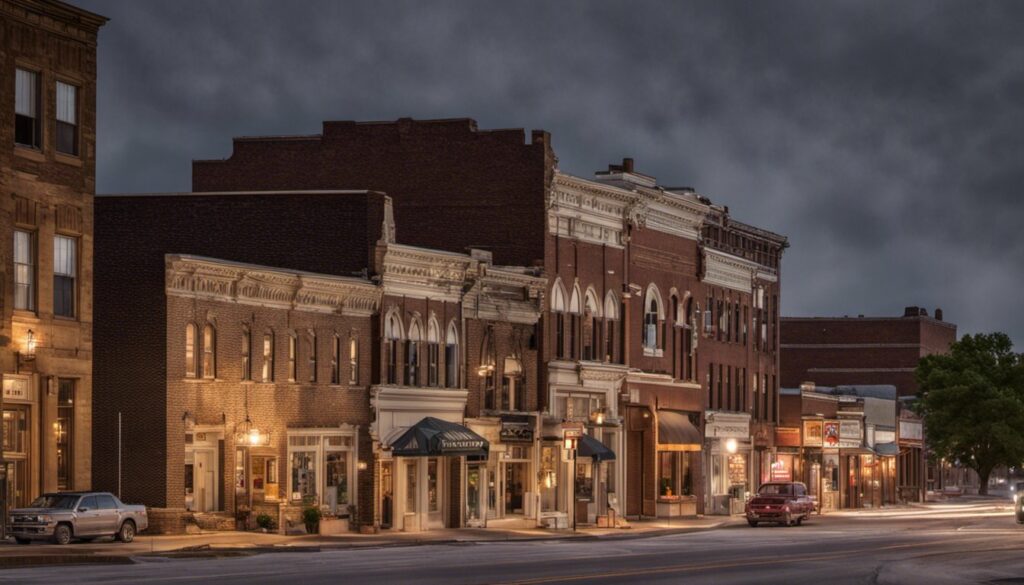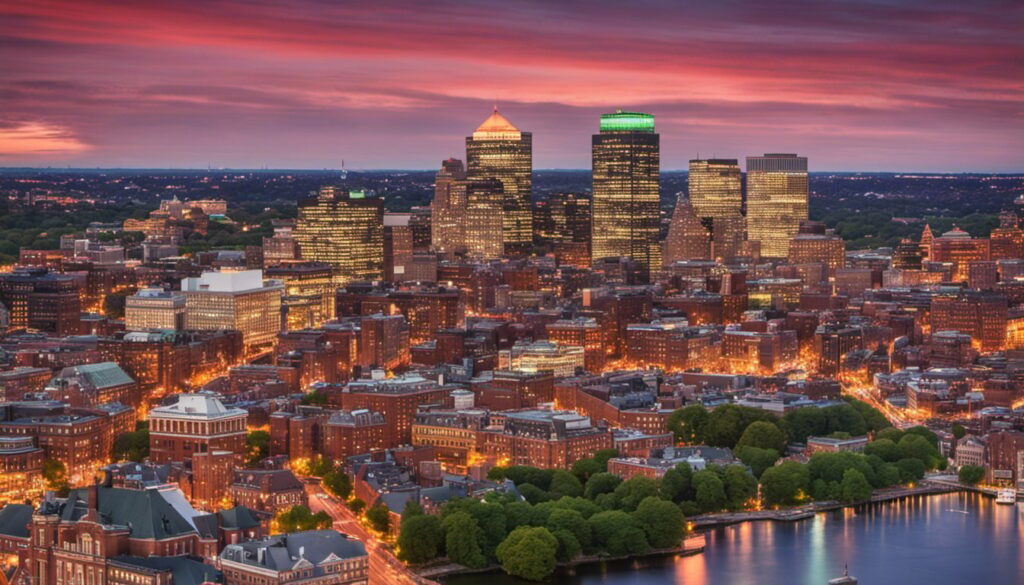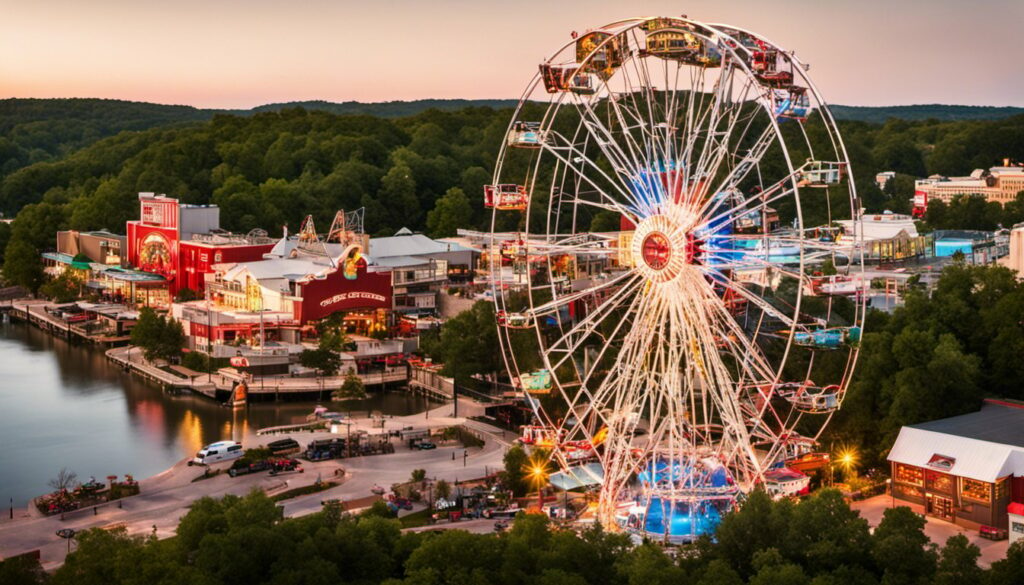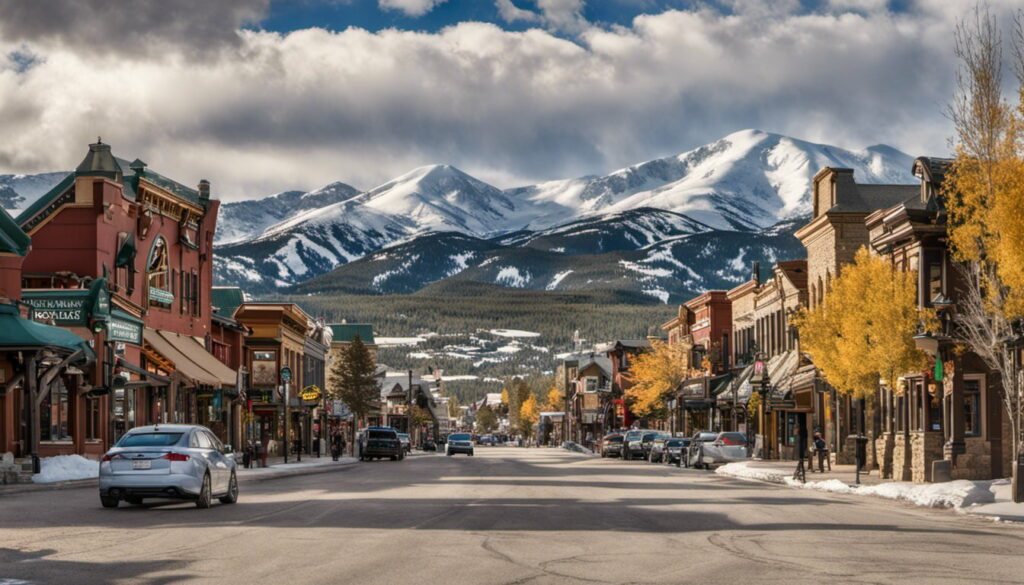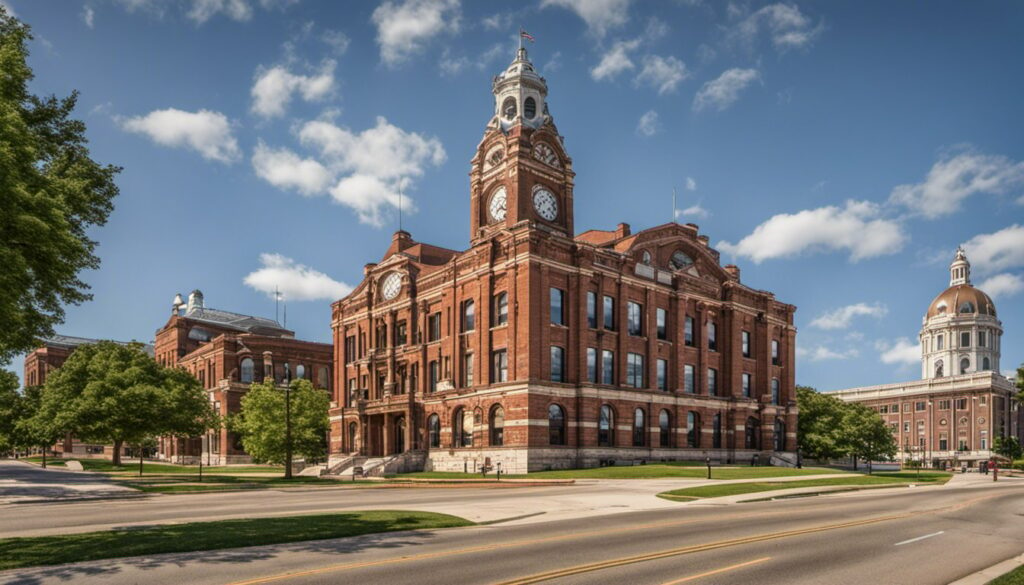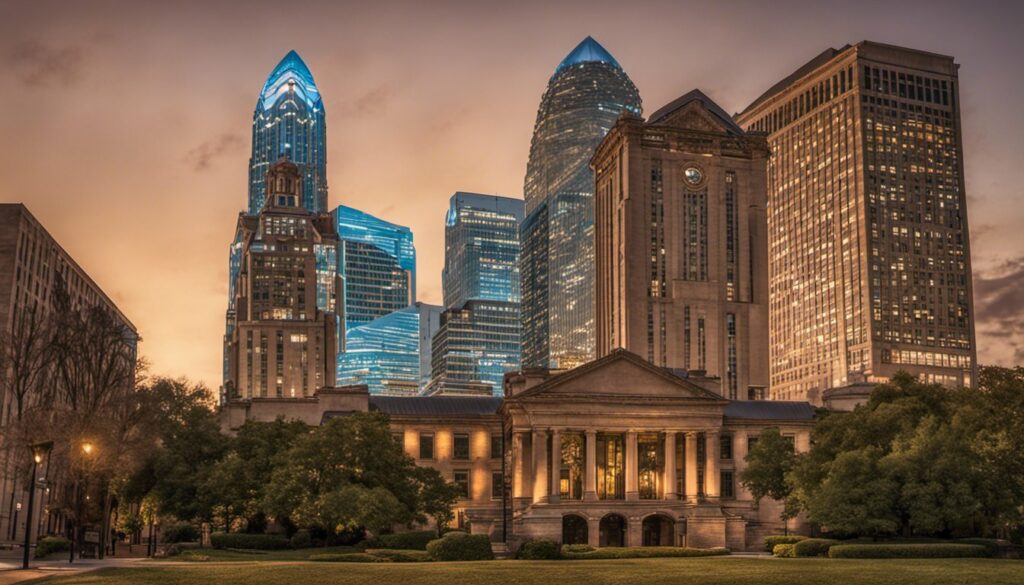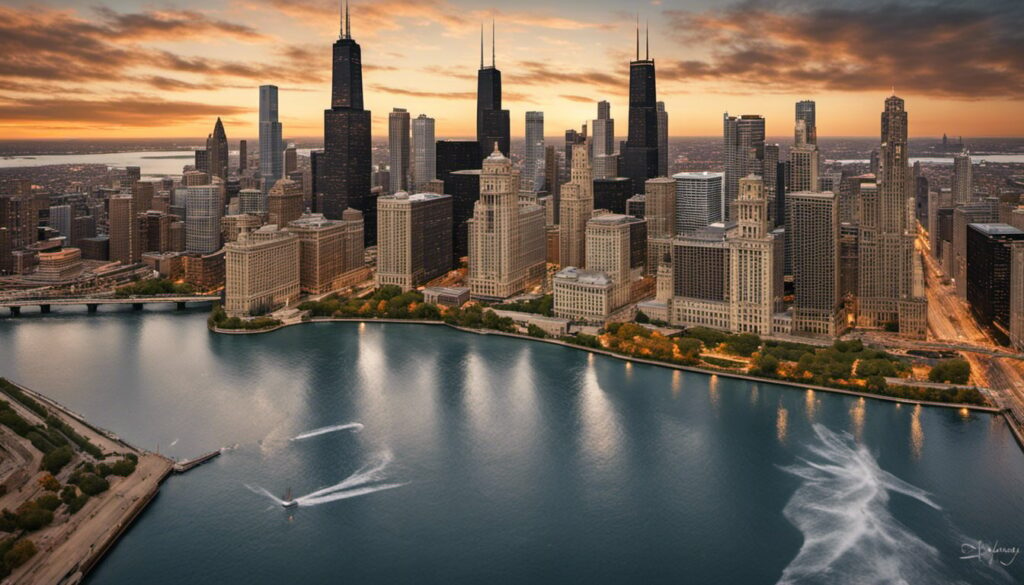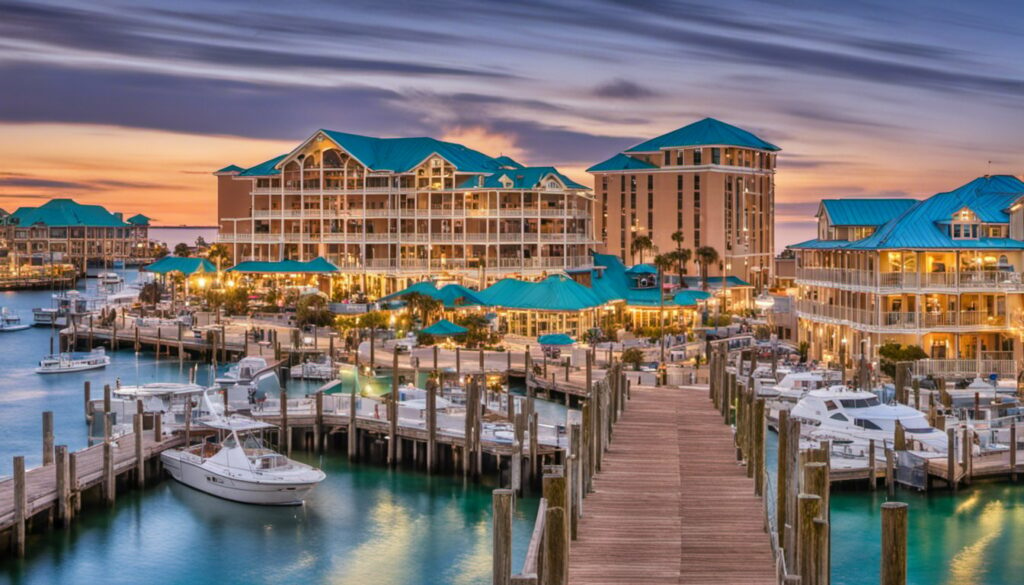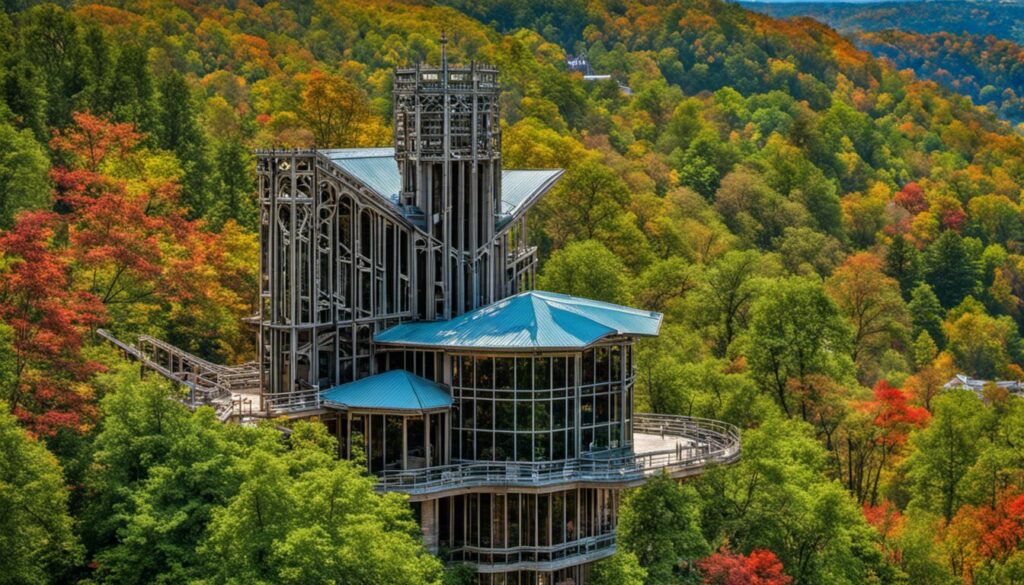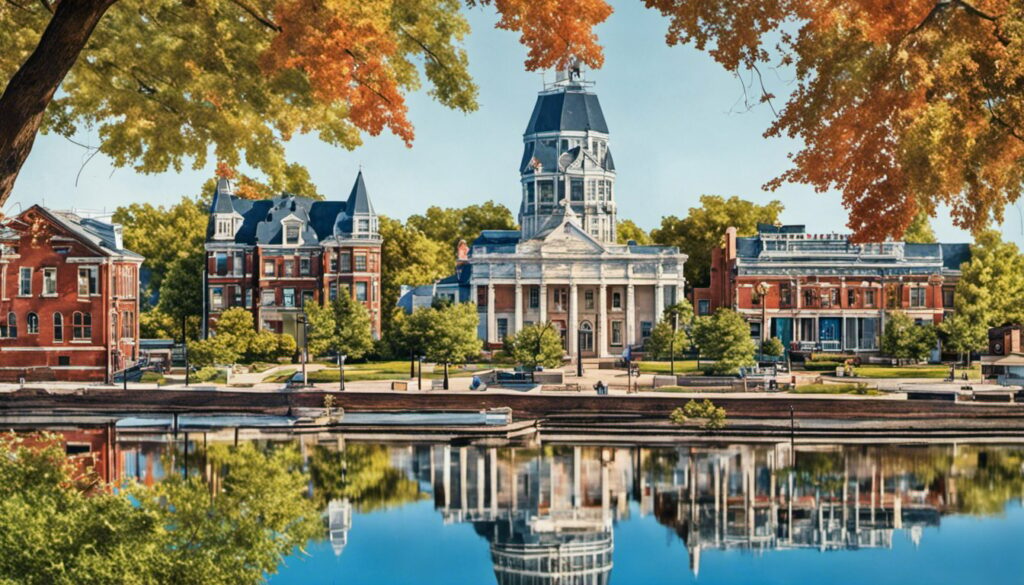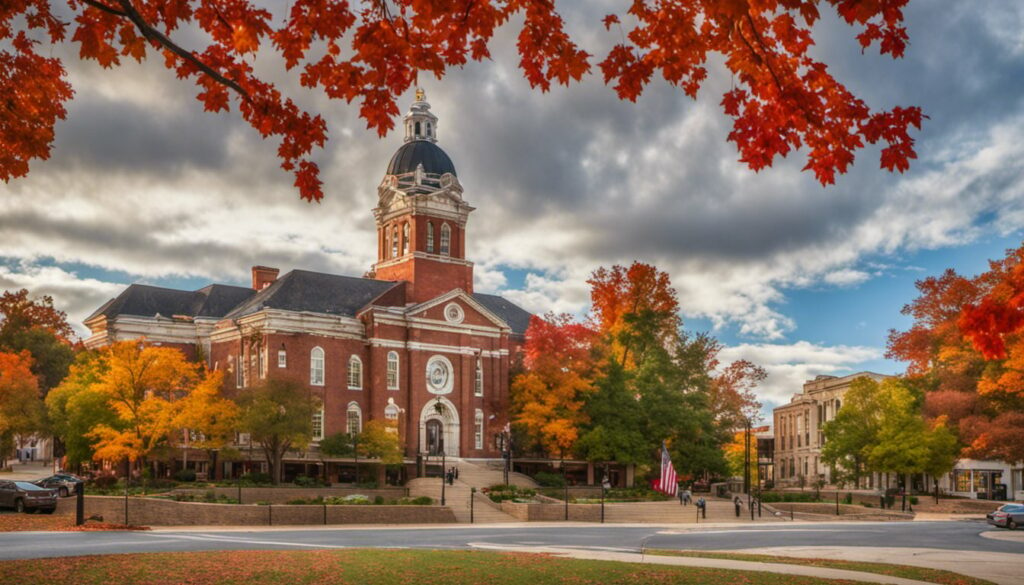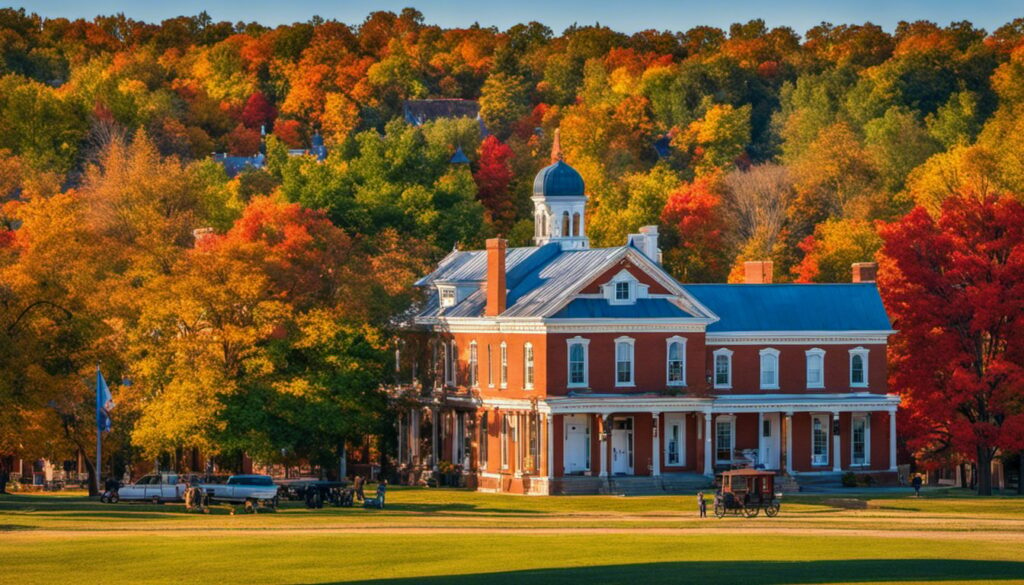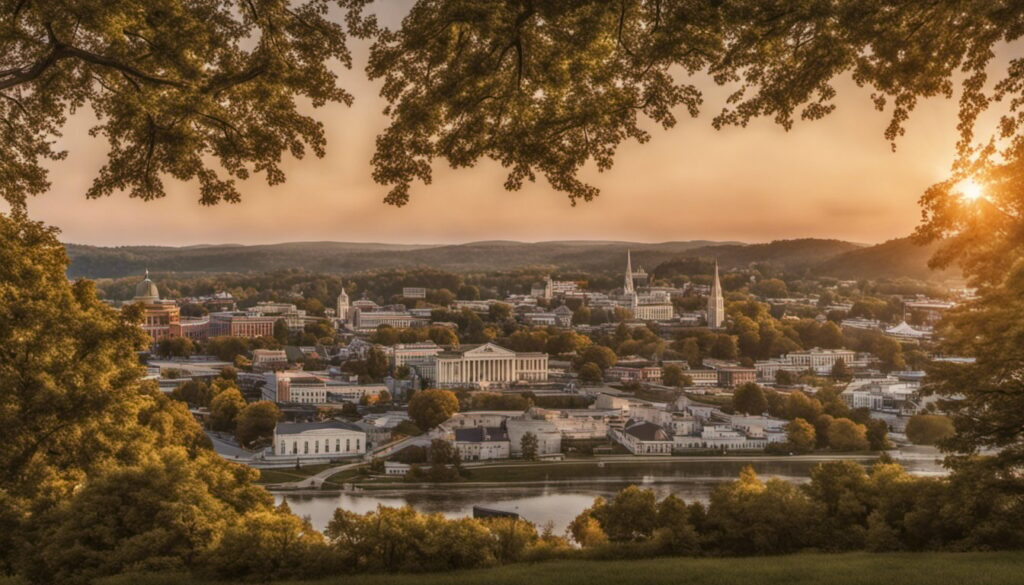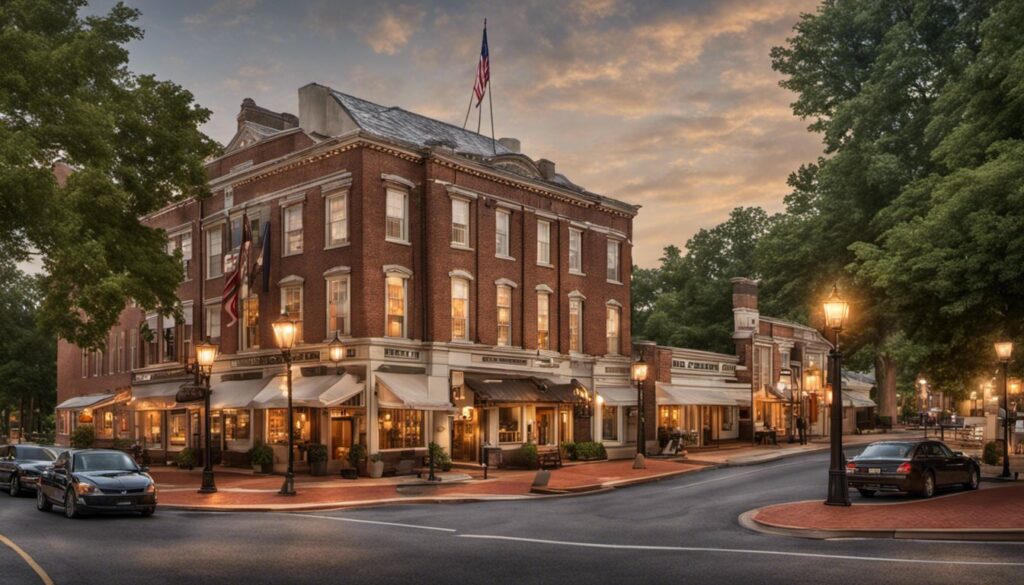Table Of Content
- Explore Grand Forks, North Dakota: Historical Sites and Famous Landmarks!
- The Rich History of Grand Forks
- Historical Sites and Landmarks
- Museums and Exhibits
- University of North Dakota
- Parks and Recreation
- Seasonal Activities and Events
- Tour Information
- Family Fun in Grand Forks
- Grand Forks in Pop Culture
- Grand Forks Air Force Base
- Shopping and Entertainment
- Significant Events
- Grand Forks and Beyond
- North Dakota Mill and Elevator
- Belmont Road
- Les Grandes Fourches
- Location and Accessibility
- Steamboats and Railways
- Frequently Asked Questions
Explore Grand Forks, North Dakota: Historical Sites and Famous Landmarks!


Are you planning a trip to Grand Forks, North Dakota? If so, you’re in for a treat! This charming city is steeped in history and boasts a wide variety of fascinating landmarks and attractions. From museums and exhibits to parks and seasonal events, there’s something for everyone in Grand Forks.
One of the most exciting aspects of Grand Forks is its rich history. This city has been around for more than a century and has played a significant role in the development of North Dakota. From the steamboats and railways that once crisscrossed the region to the North Dakota Mill and Elevator, which is still in operation today, there’s no shortage of historical sites to explore. Whether you’re a history buff or simply interested in learning more about this fascinating city, there’s plenty to discover in Grand Forks.
So, what are some of the must-see landmarks and attractions in Grand Forks? From the University of North Dakota to the Belmont Road and Les Grandes Fourches, there’s no shortage of fascinating places to visit. Whether you’re interested in shopping and entertainment or simply want to get out and explore the great outdoors, Grand Forks has something for everyone. So, pack your bags and get ready to experience the history and charm of this unique North Dakota city.
Key Takeaways
- Grand Forks is a city with a rich history and many fascinating landmarks and attractions to explore.
- From museums and exhibits to parks and seasonal events, there’s something for everyone in Grand Forks.
- Whether you’re interested in history, shopping, or outdoor recreation, Grand Forks has something for everyone to enjoy.
The Rich History of Grand Forks


If you’re a history buff, you’ll be thrilled to know that Grand Forks, North Dakota, has a rich and fascinating past. The recorded history of Grand Forks began with the trade between Native Americans and French fur trappers during the 19th century. The Cree, Hidatsa, and Crow were some of the Native American tribes that lived in the area.
French fur trappers were among the first Europeans to explore the Grand Forks area. They established a trading post at Fort Union, which was a vital center for the fur trade. The American Fur Company bought Fort Union in 1829, and it became one of the largest and most important trading posts on the Upper Missouri River.
In the mid-1800s, Alexander Griggs arrived in the area and established a steamboat landing on the Red River. This landing, which he named Grand Forks, quickly became a hub for steamboat traffic and a center for trade. Griggs is considered the father of Grand Forks, and his contributions to the town’s development are still celebrated today.
In 1872, the Northern Pacific Railroad arrived in Grand Forks, making it an even more important transportation hub. The town grew rapidly, and by the turn of the century, it was one of the largest cities in North Dakota.
Today, you can explore Grand Forks’ rich history by visiting some of the many historic sites and landmarks in the area. Some of the most popular sites include the Grand Forks County Historical Society, the North Dakota Museum of Art, and the Myra Museum. You can also take a tour of the historic downtown area, which is home to many beautifully preserved buildings from the late 1800s and early 1900s.
In short, Grand Forks has a diverse and exciting history that is just waiting to be explored. Whether you’re interested in Native American culture, fur trading, or early American settlement, there’s something for everyone in this vibrant and historic town.
Historical Sites and Landmarks


You are in for a treat in Grand Forks, North Dakota, as this city is home to several historical sites and landmarks that will take you back in time. From buildings to districts, you will be amazed by the rich history that this city has to offer.
One of the most notable historical sites in Grand Forks is the Fort Garry, which was built in 1822 by the Hudson’s Bay Company. This fort was a major trading post for furs and other goods in the region and played a significant role in the development of the area. Today, you can visit the fort and learn about its history and significance in the region.
Another must-visit historical site in Grand Forks is the Bagg Bonanza Farm. This farm was established in the late 1800s and was one of the largest wheat farms in the world at the time. Today, the farm has been restored and is open to the public. You can take a tour of the farm and learn about the history of agriculture in the region.
If you are interested in Native American history, you should visit the Knife River Indian Villages National Historic Site. This site is home to several earthlodges that were built by the Mandan people in the 1700s. You can take a tour of the site and learn about the culture and way of life of the Mandan people.
In addition to these sites, there are several buildings and structures in Grand Forks that are listed on the National Register of Historic Places. These include the Grand Forks County Courthouse, the Empire Arts Center, and the Grand Forks Masonic Temple. These buildings are not only historically significant but also architecturally stunning.
Finally, there are several historic districts in Grand Forks that are worth exploring. The Downtown Grand Forks Historic District is home to several buildings that date back to the early 1900s and has a unique charm that is hard to find elsewhere. The Near Southside Historic District is another must-visit area that is home to several historic homes and buildings.
In summary, Grand Forks, North Dakota, is a treasure trove of historical sites and landmarks that will transport you back in time. Whether you are interested in Native American history, agriculture, or architecture, there is something for everyone in this city.
Museums and Exhibits

If you’re a history buff, you’ll be thrilled to know that Grand Forks is home to several museums and exhibits that showcase the rich history of the area. Here are some of the must-visit museums and exhibits in Grand Forks:
Grand Forks County Historical Society


The Grand Forks County Historical Society operates the Myra Museum, which is home to a vast collection of artifacts that tell the story of the region’s past. The museum features exhibits on everything from Native American history to the area’s early settlers. You’ll also find exhibits on the region’s agricultural heritage, as well as displays on the devastating 1997 flood that hit the area.
North Dakota Museum of Art


The North Dakota Museum of Art is located on the campus of the University of North Dakota and is home to an impressive collection of contemporary art. The museum features rotating exhibits that showcase the work of both established and up-and-coming artists. In addition to the art exhibits, the museum also hosts a variety of educational programs and events throughout the year.
Myra Museum


The Myra Museum is operated by the Grand Forks County Historical Society and is located in a historic building that dates back to 1908. The museum features exhibits on the history of Grand Forks County, as well as displays on the area’s Native American heritage. You’ll also find exhibits on the region’s agricultural history, as well as displays on the impact of the 1997 flood.
Whether you’re interested in Native American history, art, or the region’s agricultural heritage, there’s something for everyone at the museums and exhibits in Grand Forks. So why not plan a visit today and discover the rich history of this fascinating area for yourself?
University of North Dakota


If you’re a history buff, you’ll love visiting the University of North Dakota in Grand Forks. Established in 1883, the University of North Dakota is a public research university that has played a significant role in the development of the state.
The University of North Dakota is a sprawling campus that spans across 550 acres. The university boasts a student population of over 13,000, making it the largest university in North Dakota. The campus is home to a number of notable landmarks, including the Ralph Engelstad Arena.
The Ralph Engelstad Arena is a state-of-the-art sports facility that is home to the University of North Dakota Fighting Hawks hockey team. The arena is named after Ralph Engelstad, a former student and successful businessman who donated $100 million to the university to build the arena. The arena is one of the finest sports facilities in the country and is a must-visit for sports fans.
In addition to the Ralph Engelstad Arena, the University of North Dakota is home to a number of other notable landmarks. The university’s historic district, which was added to the National Register of Historic Places in 2010, is a must-see for history buffs. The district features a number of historic buildings, including the Old President’s House, which was built in 1903 and served as the residence for the university’s presidents until 1977.
Overall, the University of North Dakota is a must-visit for anyone interested in history, sports, or higher education. With its sprawling campus, state-of-the-art sports facilities, and rich history, the University of North Dakota is one of the most exciting places to visit in Grand Forks.
Parks and Recreation

You’ll find plenty of opportunities for outdoor fun and relaxation in Grand Forks, North Dakota. From parks to rivers, there’s something for everyone.
Parks
Grand Forks boasts several parks, each with its unique features and attractions. Here are a few to check out:
Lincoln Drive Park

This expansive park offers something for everyone, including picnic areas, playgrounds, walking trails, and sports fields.
Riverside Park

Located on the banks of the Red River, this park is a popular spot for fishing, boating, and other water activities. It also features a playground and picnic areas.
University Park

Adjacent to the University of North Dakota, this park offers beautiful green spaces, walking paths, and a disc golf course.
Rivers


Grand Forks is situated on the banks of two rivers – the Red River and the Red Lake River. These waterways provide ample opportunities for recreation, including fishing, boating, and kayaking.
The Red River is particularly popular for its catfish and walleye fishing. You can also take a leisurely float down the river on a tube or raft.
The Red River of the North is a unique attraction in itself, as it forms part of the international border between the United States and Canada. It’s a popular spot for birdwatching and wildlife viewing.
Other Recreation

In addition to parks and rivers, Grand Forks offers plenty of other recreational opportunities. You can hit the links at one of the city’s golf courses, or take a bike ride on the Greenway, a 20-mile paved trail that winds through the city.
Overall, Grand Forks is a haven for outdoor enthusiasts and nature lovers. Whether you’re looking for a peaceful picnic spot or an adrenaline-pumping adventure, you’re sure to find it here.
Seasonal Activities and Events

Grand Forks, North Dakota, is a great destination for seasonal activities and events. Whether you’re visiting during the winter or other seasons, you’ll find plenty of things to do and see. Here are some of the top activities and events to check out:
Winter Activities


Winter is a magical time in Grand Forks, with plenty of opportunities for outdoor activities. You can go ice skating at the Icon Sports Center, skiing at the Turtle River State Park, or snowshoeing at the Greenway Trail. The city also hosts the annual Frosty Bobber Winter Fishing Tournament, where you can try your luck at catching some fish through the ice.
Seasonal Events


Throughout the year, Grand Forks hosts a variety of seasonal events that are fun for the whole family. In the spring, you can attend the annual Garden and Landscape Show, where you can learn about gardening and landscaping. During the summer, you can attend the Downtown Street Fair, which features live music, food vendors, and arts and crafts. In the fall, you can attend the Potato Bowl USA, which celebrates the potato harvest with a parade, potato-themed events, and a football game.
Other Events


In addition to seasonal events, Grand Forks hosts a variety of other events throughout the year. You can attend the annual Potato Days Festival, which celebrates the city’s potato heritage with potato-themed events, food, and music. The city also hosts the annual Art and Wine Walk, where you can explore downtown Grand Forks while sampling wine and viewing local art.
Overall, Grand Forks, North Dakota, is a great destination for seasonal activities and events. Whether you’re visiting during the winter or other seasons, you’ll find plenty of things to do and see. So pack your bags and get ready for an exciting adventure in Grand Forks!
Tour Information
Are you excited to explore the historical sites and famous landmarks in Grand Forks, North Dakota? Here’s everything you need to know to plan your tour.
Guided Tours


If you want a more immersive experience, consider taking a guided tour. The Myra Museum and Grand Forks Historical Society offers guided tours of the museum and the surrounding area. You’ll learn about the history of Grand Forks and see some of the most famous landmarks up close. Admission to the museum is $5 for adults and $3 for children.
Self-Guided Tours


Prefer to explore at your own pace? No problem! You can take a self-guided tour of the historic downtown area. The Grand Forks Historic Preservation Commission offers a free walking tour brochure that highlights some of the most significant buildings and landmarks. You can pick up a brochure at the Grand Forks Visitor Center or download it from their website.
Contact Information
If you have any questions about the tours or admission, don’t hesitate to reach out to the Grand Forks Visitor Center. They can provide you with more information about the various tours and attractions in the area. You can contact them by phone at (701) 746-0444 or by visiting their website.
So what are you waiting for? Start planning your tour of the historical sites and famous landmarks in Grand Forks today! Whether you prefer a guided tour or a self-guided adventure, there’s something for everyone to enjoy.
Family Fun in Grand Forks


If you’re looking for some family fun in Grand Forks, you won’t be disappointed. There are plenty of activities and attractions that will keep both kids and adults entertained.
One of the top family-friendly attractions in Grand Forks is the Ralph Engelstad Arena. This state-of-the-art facility is home to the University of North Dakota Fighting Hawks hockey team and also hosts a variety of other events throughout the year. Kids will love watching the games and exploring the arena.
For a more educational experience, head to the University of North Dakota campus. The Chester Fritz Library has a great children’s section with plenty of books, games, and activities. The North Dakota Museum of Art is also located on campus and has a variety of exhibits that will appeal to both kids and adults.
If you’re looking for some outdoor fun, check out the Greenway. This 2,200-acre park runs along the Red River and has plenty of trails for hiking and biking, as well as picnic areas and playgrounds for the kids.
For some indoor fun, head to the Albatross Indoor Golf Club. This state-of-the-art facility has 10 simulators where you can play a round of golf no matter what the weather is like outside. There’s also a bar and grill on site, so you can grab a bite to eat after your game.
Overall, Grand Forks has plenty of family-friendly activities and attractions to keep everyone entertained. Whether you’re looking for indoor or outdoor fun, educational experiences or just a good time, you’ll find it here.
Grand Forks in Pop Culture
If you are a fan of pop culture, you may be interested to know that Grand Forks, North Dakota, has been mentioned in various movies, TV shows, and books. Here are some examples:
The Herald

The town’s first newspaper, The Plaindealer, was started by George H. Walsh in 1875. Later, George Winship started The Herald in 1879. The newspaper has been mentioned in various novels and non-fiction books, including “The Boys in the Boat” by Daniel James Brown.
Great Northern Railway

The Great Northern Railway was a transcontinental railroad that operated in the northern tier of the western United States. It was built by James J. Hill and was completed in 1893. The railway has been mentioned in various movies and TV shows, including “Buster Keaton: The Railrodder” and “Hell on Wheels.”
Northern Pacific Railway

The Northern Pacific Railway was another transcontinental railroad that operated in the northern tier of the western United States. It was built by Henry Villard and was completed in 1883. The railway has been mentioned in various novels, including “The Big Sky” by A.B. Guthrie Jr.
In addition to these specific mentions, Grand Forks has also been used as a setting in various works of fiction. For example, the town is featured in “Fargo,” a TV series created by Noah Hawley. The show is set in various locations in Minnesota, North Dakota, and South Dakota, and includes scenes set in Grand Forks.
Overall, Grand Forks may not be the most famous town in the United States, but it has certainly left its mark on pop culture. Whether you are a fan of history, literature, or TV shows, there is something in Grand Forks that is sure to pique your interest.
Grand Forks Air Force Base


If you are a fan of aviation, you cannot miss visiting the Grand Forks Air Force Base. Located 16 miles west of Grand Forks, this air force base is a United States Air Force installation in northeastern North Dakota.
The history of the Grand Forks Air Force Base dates back to 1954 when the Department of Defense chose Grand Forks as the site for an Air Defense Command base. Community-minded citizens donated $65,000 towards the purchase of a 5,400-acre tract of land, and the actual construction of the base began in February of 1956. By 1960, the Air Force had stationed the KC-135 and the F-101 B fighter interceptor.
Today, the Grand Forks Air Force Base is home to the 319th Reconnaissance Wing, which operates the RQ-4 Global Hawk, an unmanned aerial vehicle. The base is also home to the 69th Reconnaissance Group, the 319th Medical Group, and the 319th Mission Support Group.
If you are interested in learning more about the Grand Forks Air Force Base, you can visit the North Dakota Air National Guard Museum, which is located on the base. The museum features exhibits on the history of the Air National Guard and the Grand Forks Air Force Base.
Overall, the Grand Forks Air Force Base is a must-visit destination for anyone interested in aviation and military history.
Shopping and Entertainment

You’ll be delighted to know that Grand Forks has a lot to offer when it comes to shopping and entertainment. Whether you’re looking for high-end fashion or locally made products, you’ll find it all here. Here are some of the best places to shop and have fun in Grand Forks.
Columbia Mall


If you’re in the mood for some retail therapy, Columbia Mall should be your first stop. With over 70 stores, this shopping center has something for everyone. From big-name brands like JCPenney, Target, and Victoria’s Secret to local boutiques, you’ll find a wide variety of stores here. You can also grab a bite to eat at the food court or catch a movie at the cinema.
Empire Arts Center


If you’re looking for some entertainment, head over to Empire Arts Center. This historic theater hosts a variety of events throughout the year, from plays and concerts to film screenings and art exhibitions. The interior of the theater is stunning, with ornate details and plush seating. Check their schedule to see what’s playing during your visit.
Downtown Grand Forks


For a more unique shopping experience, head to Downtown Grand Forks. This area is home to a variety of locally owned shops and boutiques, selling everything from handmade jewelry to vintage clothing. You can also find some great restaurants and cafes here, perfect for a quick bite or a leisurely meal.
Other Shopping Options

If you’re looking for more shopping options, check out the Southside Shopping District. Here you’ll find big-box stores like Walmart and Home Depot, as well as chain restaurants and fast-food joints.
Overall, Grand Forks has plenty of options when it comes to shopping and entertainment. Whether you prefer big-name brands or local boutiques, you’re sure to find something that catches your eye.
Significant Events
Grand Forks has a rich history, and it is marked by several significant events that have shaped the city into what it is today. Here are some of the most notable events that have occurred in Grand Forks:
Flood of 1997

The flood of 1997 was one of the most devastating natural disasters in Grand Forks’ history. The Red River overflowed its banks, causing widespread flooding that damaged thousands of homes and businesses. The floodwaters reached a record level of 54.35 feet, surpassing the previous record set in 1897. The city was under a state of emergency for several weeks, and many residents were forced to evacuate their homes. The flood caused over $3.5 billion in damages, making it one of the costliest floods in U.S. history.
Red River Floods

The Red River has been a constant threat to Grand Forks, and the city has experienced several major floods throughout its history. The floods of 1882, 1893, 1897, 1950, 1965, 1966, 1969, 1975, 1978, and 1979 caused significant damage to the city. The floods of 1997 and 2009 were the most severe, and they led to the implementation of the Greater Grand Forks Flood Risk Management Project, which includes levees, floodwalls, and other flood protection measures.
Despite these devastating floods, Grand Forks has persevered and rebuilt itself time and time again. Today, the city is a thriving community with a rich history and a bright future.
Grand Forks and Beyond


You’re in for a treat when you visit Grand Forks and its surrounding areas. The city boasts a rich history, and there are plenty of historical sites and landmarks to explore. But the fun doesn’t stop there – the neighboring cities of St. Paul and Winnipeg, Manitoba, are also worth a visit.
St. Paul, Minnesota, is just a few hours’ drive from Grand Forks. This bustling city is home to a variety of attractions, including the Science Museum of Minnesota and the Minnesota History Center. If you’re a fan of the great outdoors, head to the Mississippi River to enjoy a relaxing boat ride or a scenic hike.
Winnipeg, Manitoba, is also within driving distance of Grand Forks. This Canadian city is known for its multiculturalism, and it’s a great place to learn about the history of immigrants in the area. Take a stroll through the Forks, a historic site where the Red and Assiniboine Rivers meet, or visit the Manitoba Museum to learn about the province’s rich past.
Back in Grand Forks, be sure to check out the Greater Grand Forks Greenway. This beautiful park runs along the Red River and offers plenty of opportunities for outdoor recreation, including hiking, biking, and fishing. And of course, you won’t want to miss the city’s many historic sites and landmarks, including St. Michael’s Catholic Church and the Grand Forks Near Southside Historic District.
Whether you’re interested in history, nature, or just having a good time, Grand Forks and its surrounding areas have something for everyone. So pack your bags and get ready for an exciting adventure!
North Dakota Mill and Elevator


If you’re a history buff, then you won’t want to miss the North Dakota Mill and Elevator during your visit to Grand Forks. Established by the state government in 1922, it is the only state-owned milling facility in the United States. It is also the largest flour mill in the country, and it has a fascinating history that you’ll want to learn about.
When the mill was established, it was led by Nonpartisan League representatives who wanted to halt the hold the grain trade had on pricing. The mill was built to provide a market for North Dakota farmers, and it has been doing so for over a century. The mill has played a significant role in the state’s economy, and it has become a symbol of North Dakota’s agricultural heritage.
Today, the mill produces a wide range of flour, including bread flour, pastry flour, and whole wheat flour. It also produces durum semolina, which is used to make pasta. The mill has a capacity of over 60,000 bushels per day, and it can store up to 3.7 million bushels of wheat.
If you’re interested in learning more about the mill, you can take a tour of the facility. The tour will take you through the entire process of milling wheat, from cleaning and conditioning to milling and packaging. You’ll also learn about the history of the mill and its role in North Dakota’s economy. Tours are available Monday through Friday, and they last about an hour.
In conclusion, the North Dakota Mill and Elevator is a must-see historical site in Grand Forks. It is a symbol of North Dakota’s agricultural heritage and a testament to the state’s commitment to providing a market for its farmers. So, if you’re in the area, be sure to stop by and take a tour of this fascinating facility.
Belmont Road


If you’re looking for a slice of history in Grand Forks, North Dakota, then Belmont Road is a must-visit destination. Located in the heart of the city, this road is home to several historic sites and landmarks that offer a glimpse into the past.
One of the most popular attractions on Belmont Road is the Myra Museum and Grand Forks Historical Society. This complex includes a museum, the Campbell House (built in 1879), a one-room schoolhouse, the original Grand Forks log post office, and a replica of a pioneer church. You can explore the exhibits and artifacts that showcase the area’s rich history and culture.
Another notable site on Belmont Road is the Grand Forks Near Southside Historic District. This 182-acre historic district was listed on the National Register of Historic Places in 2004. It features a range of architectural styles, including Queen Anne, Colonial Revival, and Bungalow. You can take a stroll through the neighborhood and admire the beautiful homes and buildings.
If you’re a fan of architecture, then you’ll love the Grand Forks Masonic Temple. This stunning building was constructed in 1907 and features a mix of Classical Revival and Beaux-Arts styles. It’s a true masterpiece of design and craftsmanship.
Belmont Road is also home to several other historic sites and landmarks, including the Grand Forks County Historical Society and the Grand Forks Post Office and Courthouse. Whether you’re a history buff or just looking for a fun and educational day out, Belmont Road has something for everyone.
So, if you’re in Grand Forks, make sure to add Belmont Road to your itinerary. You won’t be disappointed by the rich history and culture that this road has to offer.
Les Grandes Fourches


If you’re a history buff, you’ll definitely want to visit Les Grandes Fourches in Grand Forks, North Dakota. This historic site is where French fur traders established a rendezvous point in the late 18th century, and it played an important role in the fur trade for many years.
Les Grandes Fourches, which means “The Grand Fork,” was named for the confluence of the Red River of the North and the Red Lake River. The site was used as a meeting place for French, Canadian, Métis, Sioux, and other indigenous people who came to exchange furs and other goods.
Today, you can visit the site of Les Grandes Fourches and see some of the historical markers that commemorate the area’s rich history. You can also learn more about the fur trade and the role that Grand Forks played in it.
If you’re interested in history, Les Grandes Fourches is definitely worth a visit. It’s a fascinating glimpse into the past, and it’s a great way to learn more about the people and events that shaped Grand Forks and the surrounding region.
Location and Accessibility


Grand Forks, North Dakota is home to a number of historical sites and famous landmarks that are worth exploring. Located in the eastern part of the state, Grand Forks is easily accessible by car, bus, or plane.
If you’re driving to Grand Forks, you can take Interstate 29 or U.S. Highway 2 to get there. The city is also served by the Grand Forks International Airport (GFK), which offers flights to and from several major cities in the United States.
Once you arrive in Grand Forks, you’ll find that many of the city’s historical sites and famous landmarks are located in the downtown area. This makes them easily accessible by foot or bike. If you prefer to drive, there are plenty of parking options available in the area.
One of the most popular historical sites in Grand Forks is the North Dakota Museum of Art. Located on the campus of the University of North Dakota, the museum features a wide range of exhibits and collections that showcase the state’s rich history and culture.
Another must-visit landmark in Grand Forks is the Ralph Engelstad Arena. This state-of-the-art facility is home to the University of North Dakota’s hockey team, and it also hosts a variety of other events throughout the year.
If you’re interested in exploring the outdoors, Grand Forks has plenty of options for you as well. The Greenway is a popular park that runs along the Red River and offers miles of scenic trails for hiking, biking, and jogging. There are also several golf courses in the area, as well as opportunities for fishing and boating on nearby lakes and rivers.
Overall, Grand Forks is a great destination for anyone who is interested in history, culture, and the outdoors. With its convenient location and easy accessibility, you’re sure to have a memorable trip to this charming city in North Dakota.
Steamboats and Railways


Grand Forks has a rich history of transportation, with steamboats and railways playing a significant role in the city’s development. The arrival of the Northern Pacific Railroad in the 1870s marked a turning point in Grand Forks’ history, opening up new opportunities for trade and commerce.
But before the railroad, steamboats were the primary mode of transportation along the Red River. The river served as a vital link between Grand Forks and other towns along the river, including Fargo and Winnipeg. Steamboats such as the North Star and the Anson Northup played a crucial role in transporting goods and people along the river. You can learn more about the history of steamboats in North Dakota at the Fargo History website.
The arrival of the railroad brought about significant changes to Grand Forks. The Northern Pacific Railroad established a depot in Grand Forks, which became a hub for transportation and commerce. The railroad brought new opportunities for businesses to access new markets and resources, and it also brought new people to the area.
Today, you can still see evidence of Grand Forks’ railway history. The Northern Pacific Railroad Depot, which was built in 1902, still stands today and serves as a museum. The depot is listed on the National Register of Historic Places and is a great place to learn more about the history of railways in Grand Forks.
Another significant landmark in Grand Forks related to transportation is the Ralph Engelstad Arena. While it may not be directly related to steamboats or railways, the arena has played a vital role in the city’s history. The arena, which opened in 2001, is home to the University of North Dakota’s hockey team and has hosted numerous concerts and events over the years. It is a testament to Grand Forks’ continued growth and development.
Frequently Asked Questions
What are some must-see historical sites in Grand Forks, North Dakota?
Grand Forks, North Dakota, is home to many historical sites that are worth visiting. Some of the must-see historical sites include the North Dakota Museum of Art, the Myra Museum, and the Grand Forks County Courthouse.
What is the story behind the North Dakota Museum of Art?
The North Dakota Museum of Art is a world-class museum that showcases contemporary and traditional art from around the world. The museum was founded in 1975 by Dr. Walter Piehl, Jr., a professor of art at the University of North Dakota. The museum has an impressive collection of over 9,000 works of art, including paintings, sculptures, and photographs.
Which famous individuals have visited Grand Forks, North Dakota?
Over the years, many famous individuals have visited Grand Forks, North Dakota. Some of the most notable include President Theodore Roosevelt, who visited the city in 1903, and astronaut Neil Armstrong, who visited the University of North Dakota in 1971.
What is the significance of the Myra Museum in Grand Forks?
The Myra Museum is a historical museum that is dedicated to preserving the history of Grand Forks and the surrounding area. The museum is housed in a beautiful Victorian mansion that was built in 1895. Visitors can explore the exhibits that showcase the history of the region, including the Native American culture, the early settlers, and the impact of the railroad on the area.
What are some unique landmarks to visit in Grand Forks, North Dakota?
Grand Forks, North Dakota, is home to many unique landmarks that are worth visiting. Some of the most notable include the Ralph Engelstad Arena, the University of North Dakota, and the Grand Forks Greenway. The Greenway is a beautiful park that runs along the Red River and is a popular spot for hiking, biking, and picnicking.
What is the history behind the Grand Forks County Courthouse?
The Grand Forks County Courthouse is a beautiful building that was built in 1911. The courthouse was designed by the architect Joseph Bell DeRemer and is a great example of the neoclassical style of architecture. The courthouse has been the site of many important events in the history of Grand Forks, including the trial of the infamous bank robber, John Dillinger, in 1934.

